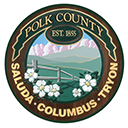Summary From the Equine First Aid Workshop
go.ncsu.edu/readext?950453
en Español / em Português
El inglés es el idioma de control de esta página. En la medida en que haya algún conflicto entre la traducción al inglés y la traducción, el inglés prevalece.
Al hacer clic en el enlace de traducción se activa un servicio de traducción gratuito para convertir la página al español. Al igual que con cualquier traducción por Internet, la conversión no es sensible al contexto y puede que no traduzca el texto en su significado original. NC State Extension no garantiza la exactitud del texto traducido. Por favor, tenga en cuenta que algunas aplicaciones y/o servicios pueden no funcionar como se espera cuando se traducen.
Português
Inglês é o idioma de controle desta página. Na medida que haja algum conflito entre o texto original em Inglês e a tradução, o Inglês prevalece.
Ao clicar no link de tradução, um serviço gratuito de tradução será ativado para converter a página para o Português. Como em qualquer tradução pela internet, a conversão não é sensivel ao contexto e pode não ocorrer a tradução para o significado orginal. O serviço de Extensão da Carolina do Norte (NC State Extension) não garante a exatidão do texto traduzido. Por favor, observe que algumas funções ou serviços podem não funcionar como esperado após a tradução.
English
English is the controlling language of this page. To the extent there is any conflict between the English text and the translation, English controls.
Clicking on the translation link activates a free translation service to convert the page to Spanish. As with any Internet translation, the conversion is not context-sensitive and may not translate the text to its original meaning. NC State Extension does not guarantee the accuracy of the translated text. Please note that some applications and/or services may not function as expected when translated.
Collapse ▲Unfortunately, if you own horses long enough, sooner or later you are likely to confront a medical emergency. Knowing how to recognize serious problems
and respond promptly, with the appropriate action, while waiting for the assistance of your veterinarian is essential to a successful outcome. If you were not able to join us, here are some takeaways that may help you tackle future emergencies:
1. Keep your veterinarian’s number (including an after-hours number) in your phone
and posted in the barn. Make sure everyone caring for your horses knows where
it is.
2. Consult with your regular veterinarian regarding a back-up or referring
veterinarian’s number in case you cannot reach yours quickly enough.
3. Post names and phone numbers of nearby friends and neighbors who can assist
you in an emergency while you wait for a veterinarian.
4. Prepare a first aid kit and store in a clean, dry, readily accessible place. Make
sure everyone knows where it is. Also keep one in your horse trailer or towing
vehicle, and possibly a smaller version for the trail.
First Aid Kit Necessities:
1. Duct Tape
2. Baby diapers
3. Epsom salt
4. Animalintex,ichthammol or
Epsom salt poultice
5. Betadine or chlorhexidine
solution and/or scrub
6. Neosporin or similar antibiotic
ointment/cream
7. Gauze Squares
8. Brown Gauze or other type of roll
gauze
9. Vet wrap
10. Leg wraps: roll cotton or
disposable leg wrap
11. Banamine and/or Bute
12. Rubbing alcohol
13. Scissors and/or bandage scissors
14. Rectal thermometer
15. Stethoscope
16. Nippers/nail removers for pulling
a shoe
17. Latex gloves
18. Syringes and needles
19.. Saline
It’s very important to be able to check vitals on your horse, so that they can be reported to your veterinarian over the phone in the event of an emergency. Normal equine vitals are:
Rectal Temperature
Adult horse: 99.5 – 101.5
Foal: 99.5 – 102
Heart Rate/Pulse
Adult horse: 30- 42 beats/min
Foal: 80-100 beats/min
Respiration
Adult horse: 12-20 breaths/min
Foal: 20-40 breaths/min
Capillary Refill Time
Lift horse’s upper lip and press firmly on
gum. The color should return to normal
within 2 seconds.
Many accidents can be prevented by taking the time to evaluate your horse’s
environment and removing potential hazards. Mentally rehearse your emergency action plan. By acting quickly, you can minimize the consequences of an injury or illness.




